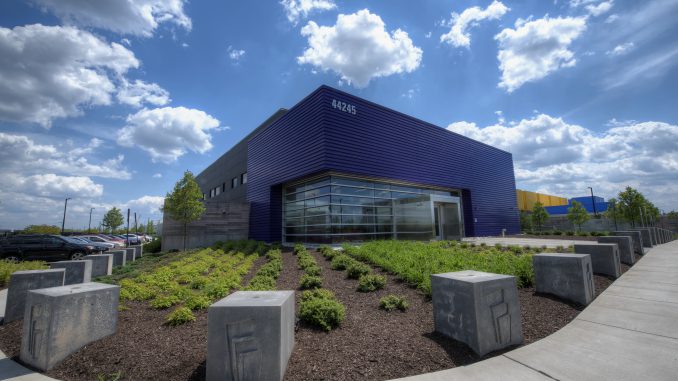
By Chris Wadsworth
Photography by Alex Erkiletian
Data centers.
They are ubiquitous across Ashburn and surrounding communities. These giant, warehouse-type structures that line major highways and backroads, too. Some people hate them — for taking down too many trees and for being unattractive. Some people love them — for creating thousands of jobs in Loudoun County and keeping our property taxes lower than they otherwise might be.
People who work in the technology world probably know all about them. But for many Ashburn residents, data centers can still be kind of mysterious. What actually happens inside them? Who actually works there? What do they look like inside? Are they part of the “cloud” we keep hearing about?
Ashburn Magazine went deep inside a data center with one of our community’s largest data companies — RagingWire. The company has three data centers open in Ashburn and more underway. We were given access to its original “VA1” facility off Beaumeade Circle in Ashburn and taken to areas never publicly photographed before to help better explain this industry that affects all of our lives.
Security is tight at nearly all data center locations, RagingWire included. Common features outside include water basins, berms, depressions and walls around facilities; spike-topped fences; security gates with anti-ram barriers; obstacles such as cement bollards and metal posts; even winding roads leading to the centers prevent a vehicle from rapidly speeding up. Plus there are lots of cameras.
Inside, many of the security measures are secret, but as we entered one facility, we passed through a room called a “man trap.” “It’s a space with one door in and one door out,” said James Leach, vice president of marketing for RagingWire. “Each door requires a different security key. The second door can’t open until the first one opens and closes.”
Everyone entering is observed by a security guard in a control room. If more people enter the secure area than have swiped their badges, sensors in the room recognize the extra person and the doors will not unlock until the guard has verified who is entering.
This is the Network Operations Center. Internally, they call it the NOC (rhymes with “knock”). “It’s like mission control, or an air traffic control center,” said Evan Bass, RagingWire’s marketing communications manager. “We are monitoring the power, the cooling, the diagnostics of the facility. We are monitoring everything to keep your lights blinking so you can keep watching Netflix at home.”
They even monitor the weather from here. If snow storms or other adverse conditions are predicted, they stockpile extra fuel for generators and buy food and supplies for employees who will stay onsite to keep the facility running perfectly.
Charles Wade, RagingWire’s supervisor of critical facilities operations, is standing in front of part of the UPS, or uninterruptible power supply. Picture it sort of like the battery back-up in your alarm clock that keeps the time correct, even if the power goes out in your home.
“The main purpose of the UPS is to stabilize and normalize the power that comes from utilities,” Wade said. “Power goes up and down. Spikes. Brownouts. The battery makes sure there is always power to the servers. If power goes out even for a second, the UPS batteries provide continuous power until the generators kick in.” The UPS system is all about smoothing out the flow of power so it stays steady and dependable no matter what happens.
Should the power from local utilities ever go out, the batteries keep power in the data center flowing smoothly while the generators kick on in a matter of seconds. There are dozens of generators on each site — redundancy is the key — with spare generators to cover testing and maintenance. “It’s like we have lots of spare tires in our trunk,” Bass said.
Here are the real guts of a data center.
Massive room after massive room (RagingWire calls them “vaults”) filled with hundreds of racks 8 to 10 feet tall. Each rack is filled with servers that are running millions of websites. Another way to say it — there are lots of shelves with lots of computers.
“In a single server rack, you could have up to 20-plus computers running at the same time,” said Viggy Hegde, RagingWire’s senior director of marketing. “It’s where the data comes in and goes back out.” So, for example, when you take a selfie and post it on Facebook, that photo comes to a data center like this and sits on a server. When your friend clicks on the photo to see it, their request comes in over the internet and the image goes out to their computer or phone.
Now, multiply that by billions — social media, online stores, internet search engines, company websites, nearly everything goes through servers at data centers around the world, centers like RagingWire. When you hear people talking about “the cloud,” this is what they mean. The computers in data centers are the cloud.
The cooling system is basically like a massive air conditioning unit. All those thousands of servers (computers) generate a lot of heat. So a huge system of chillers with coils and fans (just like in your AC only much, much bigger) sends air flowing through the facility, while the heat in the vaults is absorbed and whisked away. That’s the point of the big cooling towers outside.
It’s all smart technology — the system cranks up on hot summer days and slows down on cool nights. In colder months, outside air can be used instead, coming in via large filters that purify the air.
RagingWire has made a name for itself with its innovative design — and won many awards. From colorful welcome areas to break rooms filled with amenities, there’s a bit of a magical feel inside.
Data centers have a lot more people working in them than you might imagine. Besides the data center’s own employees, many of the clients who store their servers there will have their own employees and technicians onsite. For example, Company X might send a team to work on their servers who will stay for a few days, a few weeks or longer. Besides decked-out break rooms, RagingWire and other data centers have conference rooms, exercise rooms, lounges, patios and even video game spaces for clients to enjoy.

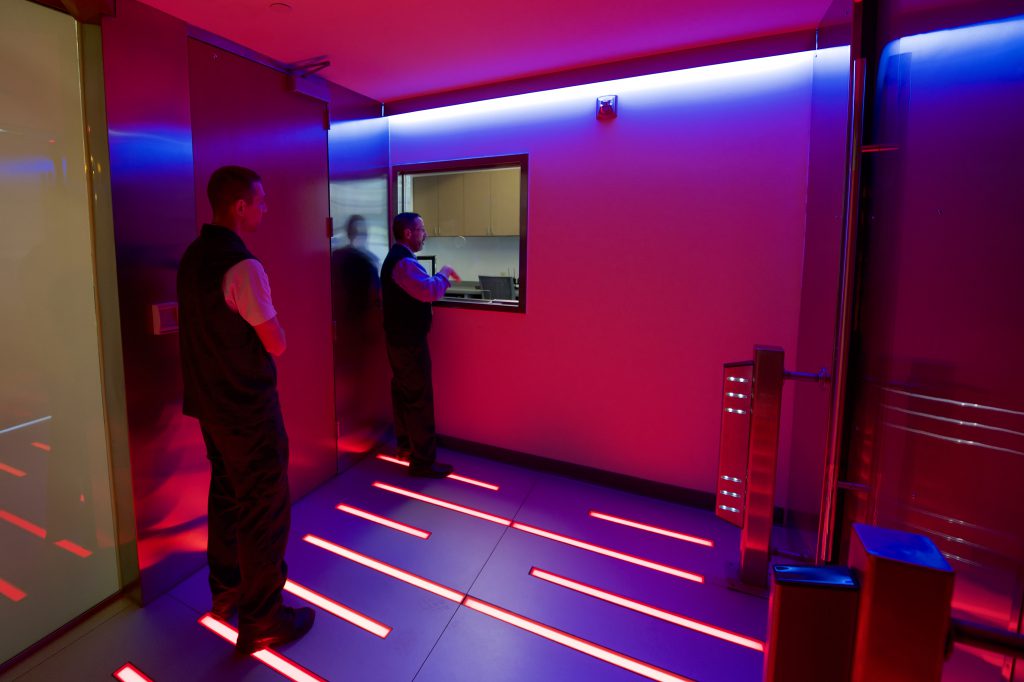
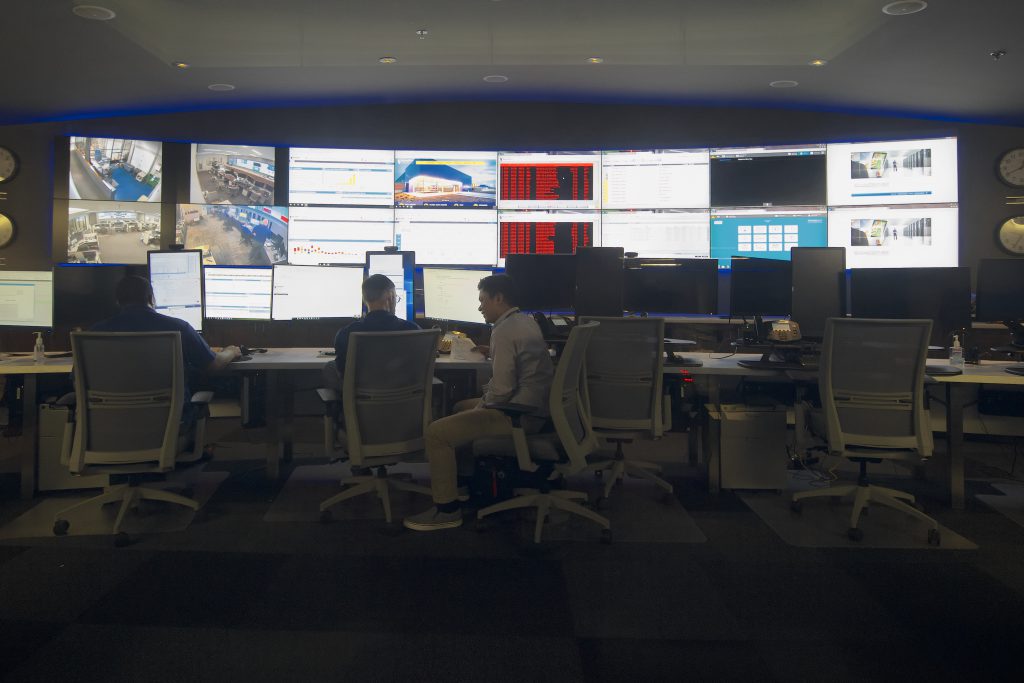
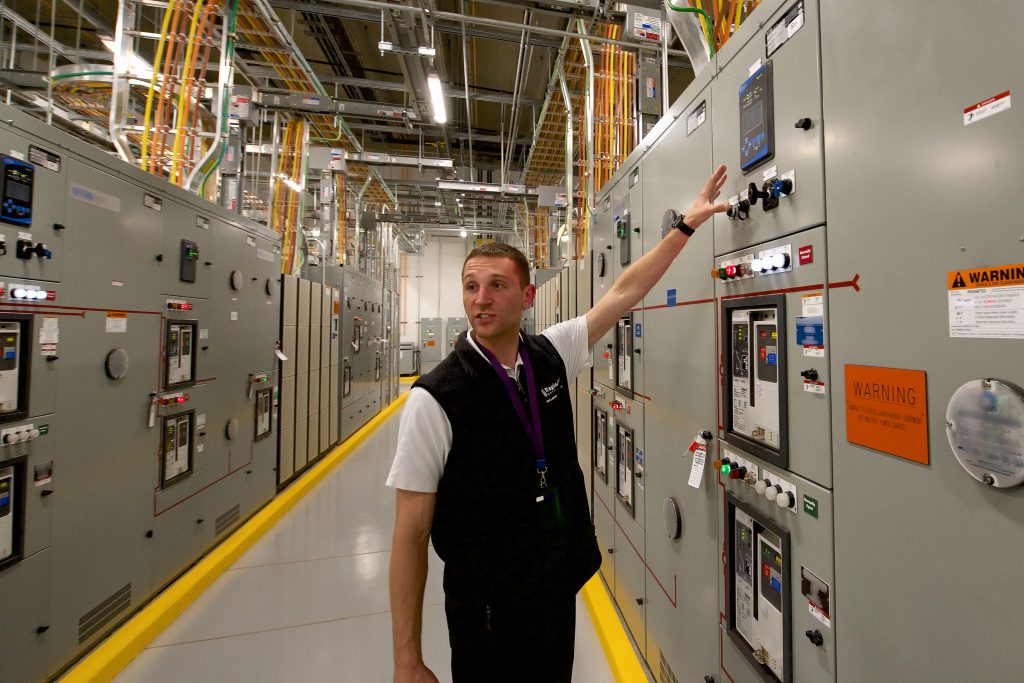
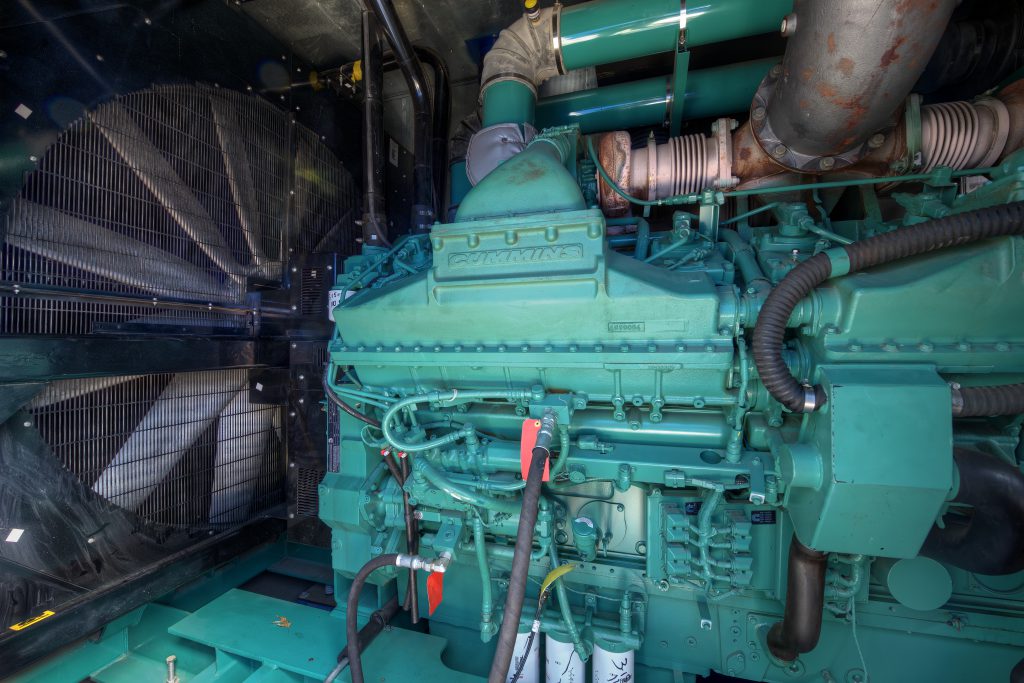

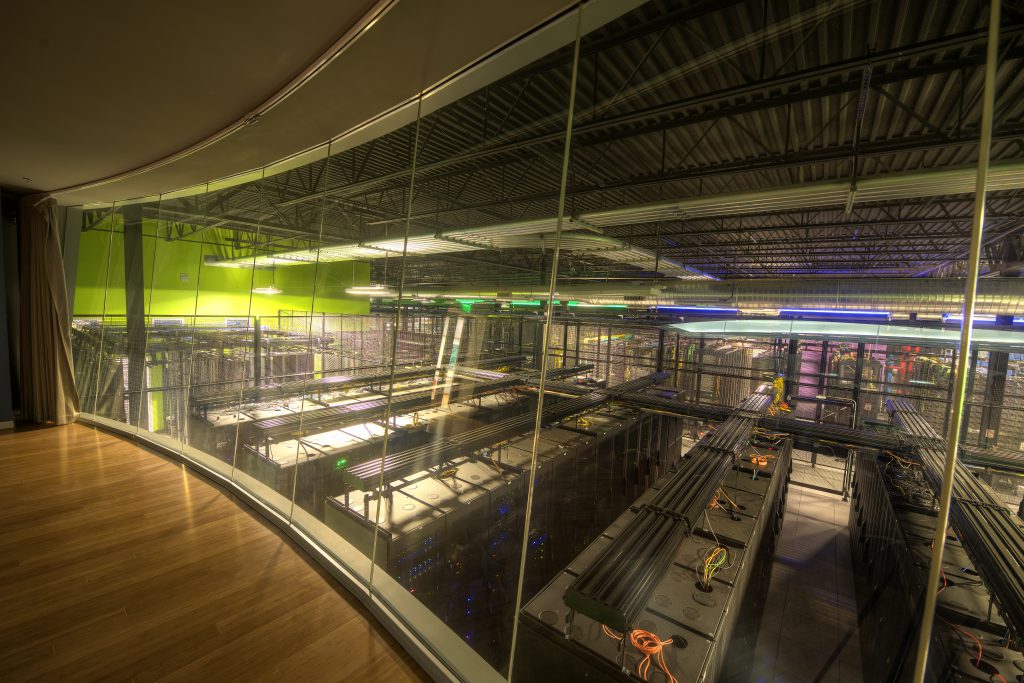
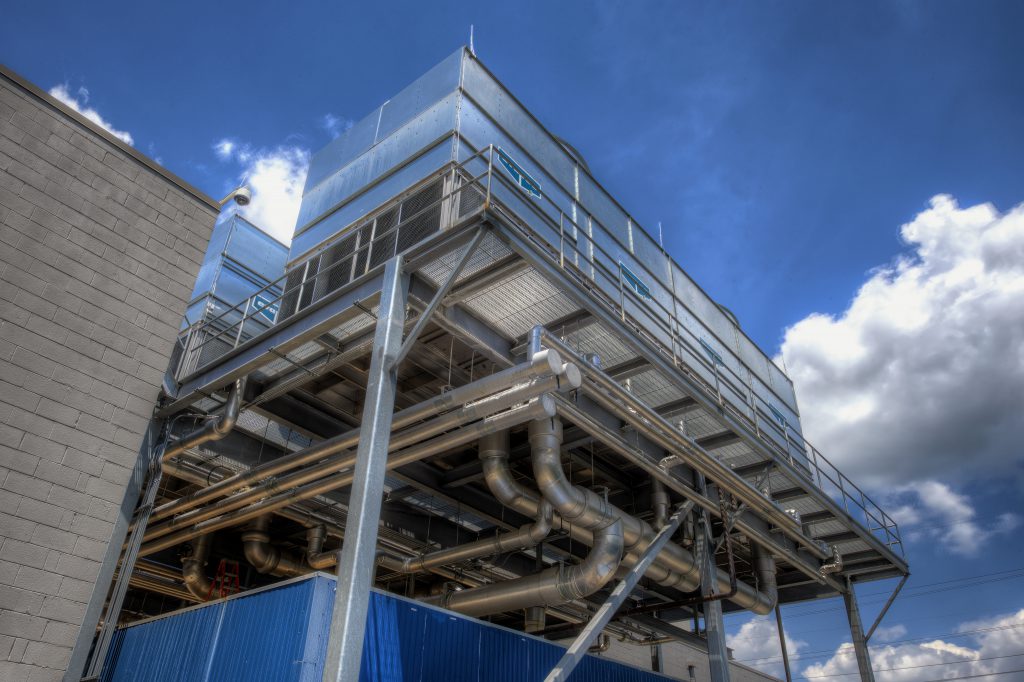
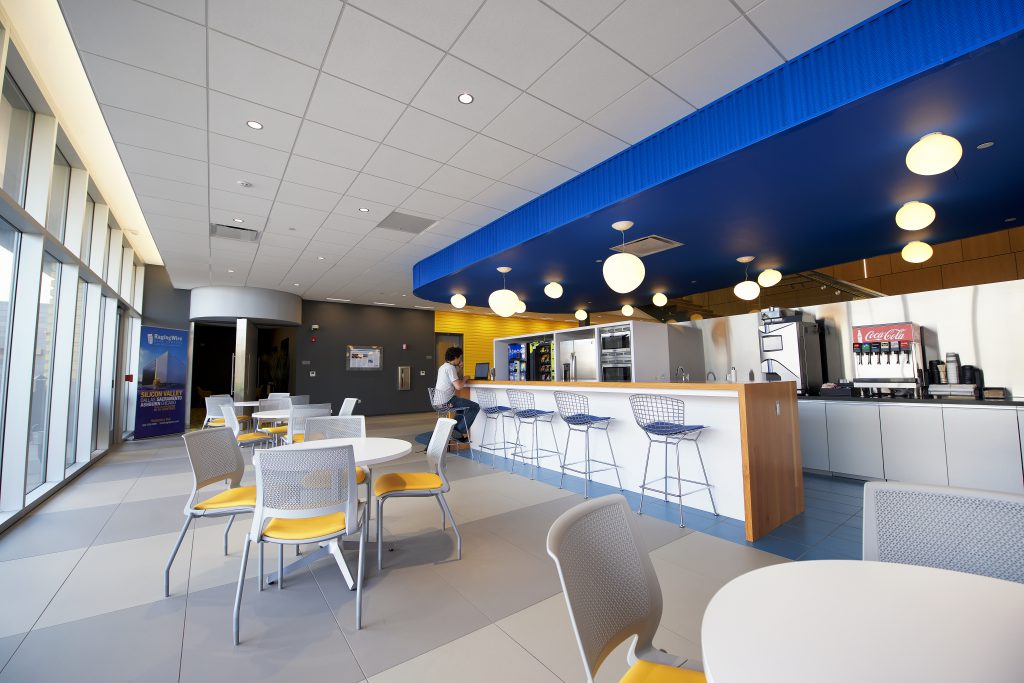

Charles Wade looks to be standing in front of a switchgear section, not a UPS.
Very cool! Thanks for sharing this and for Raging Wire to allow the photos!